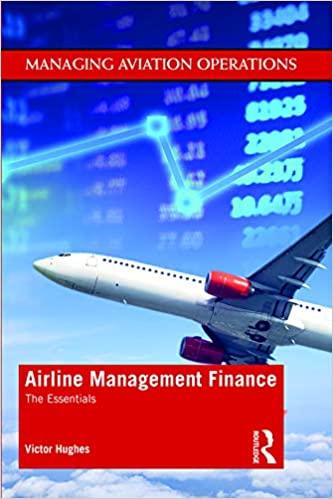Question
Role and Context You are a newly hired financial analyst with Cascade Water Company (CWC), a company operating in most states of Australia, which specialises
Role and Context
You are a newly hired financial analyst with Cascade Water Company (CWC), a company operating in most states of Australia, which specialises in bottling purified water sourced from local water springs. CWC is considering adding to its product mix a healthy bottled water geared towards children, aimed at improving both its business focus and the return to shareholders.
Scenario
CWC currently has 30,000,000 ordinary shares outstanding that trade at a price of $42 per share. CWC also has 500,000 bonds outstanding that currently trade at $923.38 each. The companys bonds have a 20 year life, a $1,000 par value and a 10% coupon rate that pays interest semi-annually. CWC has no preferred equity outstanding and has an equity beta of 2.639. The risk free rate is 3.5% and the market is expected to return 12.52%. CWC has a tax rate of 34%.
The initial outlay for the new project is expected to be $3,000,000, which will be depreciated using the straight line method to a zero salvage value, and sales are expected to be 1,250,000 units per year at a price of $1.25 per unit. Variable costs are estimated to be $0.24 per unit and fixed costs are estimated at $200,000 per year. The project is expected to have a 3 year life and a terminal value (excluding the operating cash flow in year 3) of $500,000. For the purpose of this project, working capital effects are ignored.
CWCs CEO, Dr. William Foster, has asked the finance department if they consider such project to be an acceptable investment. The CFO, Mrs. Charlotte ORourke, intends to evaluate the project based on the net present value (NPV)approach. She agrees with Dr. Foster on the major assumptions that will affect these cash flows, but they disagree on the appropriate discount rate. Dr. Foster believes that they should use the companys weighted average cost of capital (WACC), however, the CFO disagrees, arguing that the bottled water targeted at children has different risk characteristics from the companys current products. She argues that the companys WACC is inappropriate as a discount rate and they should instead use the pure play approach and estimate a cost of capital based on companies that sell similar type of products. To do this, Mrs. ORourke obtains some data for several comparable companies as follows:
| Company | Cost of Equity | Cost of Debt | D/E | Tax Rate |
| Fruity Water | 21.2% | 8% | 0.43 | 34% |
| Ladybug Drinks | 19.70% | 7.75% | 0.35 | 36% |
Task
The CEO and CFO have decided to rely on your newfound expertise as to provide a recommendation on why the companys WACC shouldnt be used, and if not, what is the appropriate discount rate to be used to value the new project. Concerned about the forecasting risk of this project, they also ask that you perform a risk evaluation in the form of:
- Sensitivity analysis for sales price, variable costs, fixed costs and unit sales at 10%, 20%, and 30% from the base case, showing on a graph which variables are most sensitive
- Scenario analysis on the following two scenarios:
a) Best Case: selling 2,500,000 units at a price of $1.24 and variable costs of $0.22 per unit
b) Worst Case: selling 950,000 units at a price of $1.32 and variable cost of $0.27 per unit
If necessary, make clear any additional assumptions you need to undertake the evaluation.
Step by Step Solution
There are 3 Steps involved in it
Step: 1

Get Instant Access to Expert-Tailored Solutions
See step-by-step solutions with expert insights and AI powered tools for academic success
Step: 2

Step: 3

Ace Your Homework with AI
Get the answers you need in no time with our AI-driven, step-by-step assistance
Get Started


